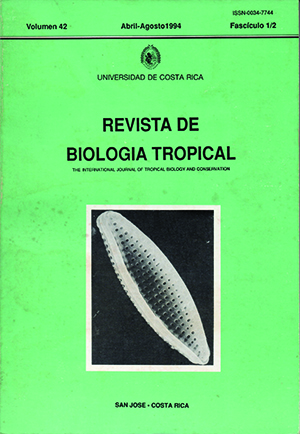Abstract
Species of Harpellales (Trichomycetes: Zygomycotina) were found living in the guts of Chironomidae. Culicidae and Ceratopogonidae larvae inhabiting reservoirs of water retained by the leaves of epiphytic bromeliads and a few other plants, including pineapple and banana, as well as from a swamp. Periodic collections in Costa Rica between 1984 and 1991 inc1uded a low wet forest (La Selva Biological Station), a c10ud forest (Monteverde Cloud Forest Reserve), and a zone of premontane rain forest (Las Cruces Bíological Station). A new trichomycete, Smittium phytOlelmalum, that inhabits bloodworms (Chironomidae) was found primarily but not exclusívely in bromeliads, and several axenic cultures of the fungus were obtained. A second, rarer, new species from a bromeliad bloodworm, S. fascicuJatum, is also described. as is the new specíes Stachylina paludosa from swamp bl00dworms. Two possibly new but unnamed speeies of Smittium are deseribed from lentie dípteran ¡arvae. Mosquito, midge and ceratopogonid larvae were liosts to a geographieally widespread Harpellales, Smittium culisetlU!. Bracts of Heliconia inflorescences, though often populated by mosquito larvae and other inseets, contained no larvae with gut fungi. Water in Heliconia braets averaged 2.36 pH units above that in bromeliads (average pH 5.02). It was dernonstrated in the laboratory that Heliconia-inhabiting mosquito larvae maintained in their native water could be artificially infested with axenic cultures of S. culisetae. The apparent lack of natural fungal infestation of mosquito larvae in heliconias may be due 10 the ephemeral nature of the plants' water-holding braets and extrinsic factors such as recruitment of fungal inoculum.Comments

This work is licensed under a Creative Commons Attribution 4.0 International License.
Copyright (c) 1994 Revista de Biología Tropical
Downloads
Download data is not yet available.


